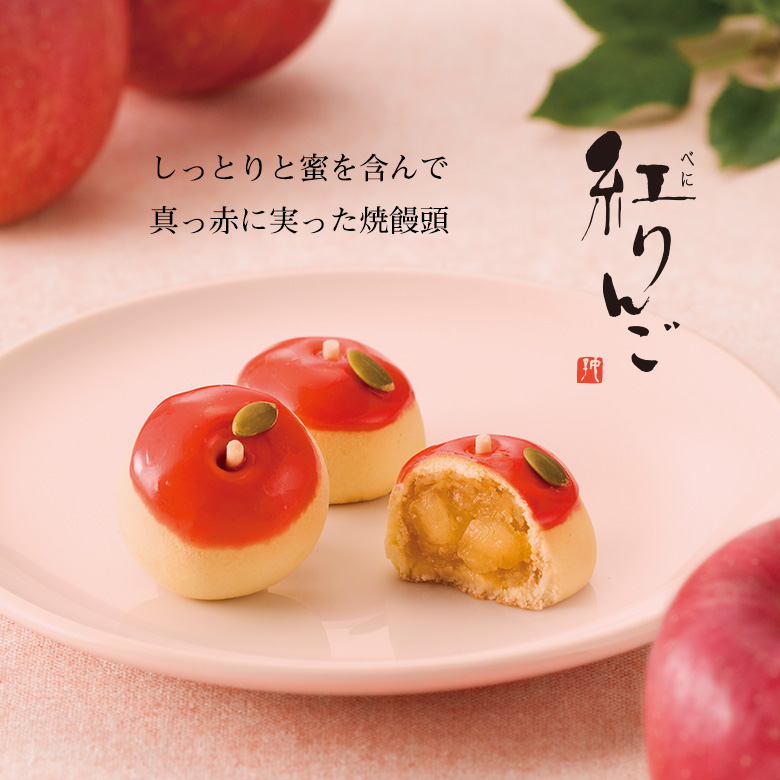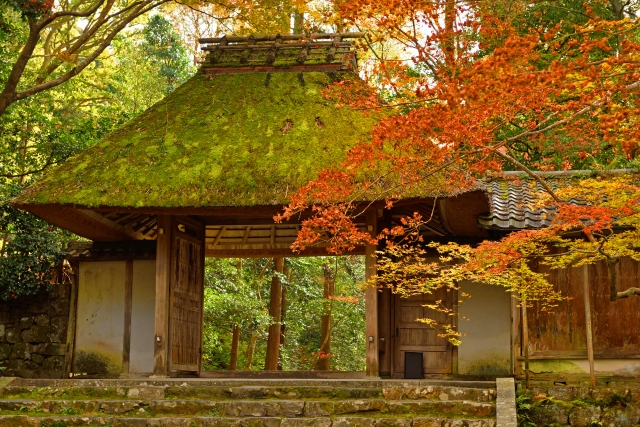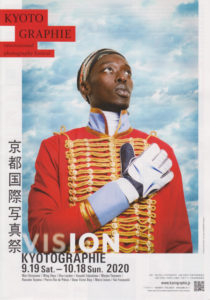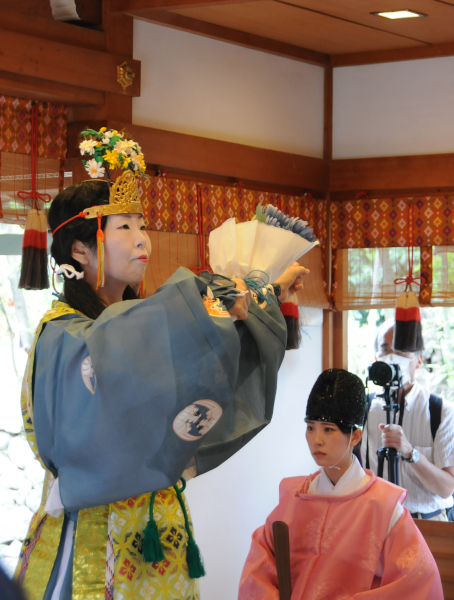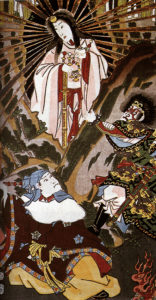 Deep in the bamboo forest of Arashiyama lies Nonomiya Jinja, one of the oldest shrines in Kyoto, dating back to the 7th century. Nowadays, it is a rather small shrine overflowing with tourists, but when it was established, it was literally a “shrine in the fields” (hence the name) dedicated to Amaterasu, the Sun Goddess. Those imperial princesses who were meant to become priestesses at Ise, the main shrine of Amaterasu, first came here for a purification rite that took a year or more. Afterwards, they were sent off in a colorful procession, never to return to their family.
Deep in the bamboo forest of Arashiyama lies Nonomiya Jinja, one of the oldest shrines in Kyoto, dating back to the 7th century. Nowadays, it is a rather small shrine overflowing with tourists, but when it was established, it was literally a “shrine in the fields” (hence the name) dedicated to Amaterasu, the Sun Goddess. Those imperial princesses who were meant to become priestesses at Ise, the main shrine of Amaterasu, first came here for a purification rite that took a year or more. Afterwards, they were sent off in a colorful procession, never to return to their family.
The first such saigu to be sent to Ise from Nonomiya Shrine was a daughter of the Saga Emperor in the 8th century. However, the practice ended in the 14th century. Afterwards, the shrine continued to be used for a variety of imperial rituals, and although its importance has declined over the years, and probably its size as well, it is still maintained and visited by members of the Imperial Family until today.
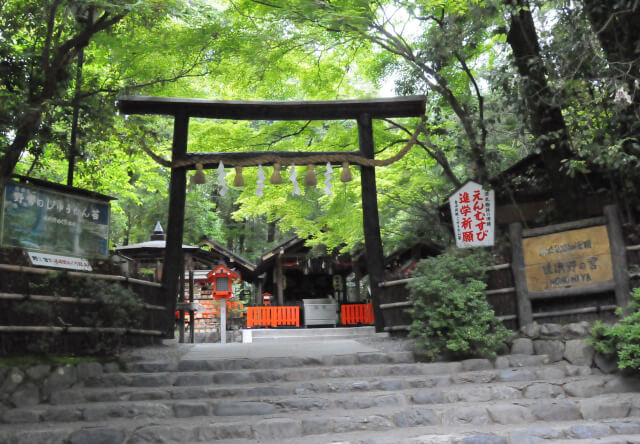 Nonomiya Jinja lies in the evergreen bamboo forest of Arashiyama – the traditional meaning of bamboo is to ward off evil. The entrance to the shrine precincts is at the black kuroki torii which is made from oak with its bark left intact. This kind of “natural” torii is the oldest style of torii that has been used, but because they are nowadays seen very rarely since they are expensive to set up and properly care for.
Nonomiya Jinja lies in the evergreen bamboo forest of Arashiyama – the traditional meaning of bamboo is to ward off evil. The entrance to the shrine precincts is at the black kuroki torii which is made from oak with its bark left intact. This kind of “natural” torii is the oldest style of torii that has been used, but because they are nowadays seen very rarely since they are expensive to set up and properly care for.
 The haiden prayer hall, where Amaterasu is to be worshipped, lies only a few steps behind the torii. This is the main square of Nonomiya shrine and there are many ways to pray to the gods. For one, there is the large kame-ishi stone that looks like a turtle. It is said, that if you ask the gods for something and afterwards, with that wish still in mind, give the kame-ishi a good rub, the wish will come true within a year.
The haiden prayer hall, where Amaterasu is to be worshipped, lies only a few steps behind the torii. This is the main square of Nonomiya shrine and there are many ways to pray to the gods. For one, there is the large kame-ishi stone that looks like a turtle. It is said, that if you ask the gods for something and afterwards, with that wish still in mind, give the kame-ishi a good rub, the wish will come true within a year.
Here is also a spot to put up ema or to write your wishes onto prayer sticks, both of which will be ritually burned at special intervals. And if you buy one of the special mizu omikuji, there is a little well where you can float your water charms and see what is in store for you.
 To the right of the haiden, there is a red torii that leads further into the shrine’s precincts. Here are the shrines for the minor gods that are worshipped here, like Shirafuku Inari and Nonomiya Daikokuten who are responsible for good marriages and childbirth, and Shiramine Bezaiten and Ooyama Bezaiten watch over the arts and traffic safety, respectively.
To the right of the haiden, there is a red torii that leads further into the shrine’s precincts. Here are the shrines for the minor gods that are worshipped here, like Shirafuku Inari and Nonomiya Daikokuten who are responsible for good marriages and childbirth, and Shiramine Bezaiten and Ooyama Bezaiten watch over the arts and traffic safety, respectively.
There is also an interesting mikoshi portable shrine that looks quite different to the others that are usually used during festivals. I am not sure why this is, but it makes a nice motif for photos.
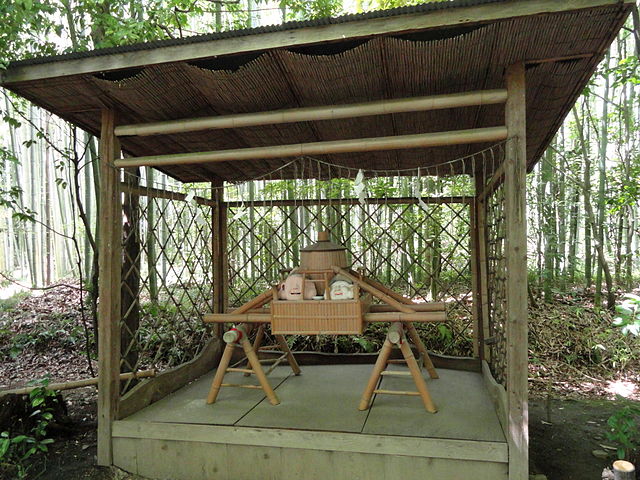 Another popular motif is the moss garden of Nonomiya Shrine. Although quite small compared to many other shrine gardens, the lush green color of the moss carpet amidst the red cedar trees is admired by many visitors throughout the year.
Another popular motif is the moss garden of Nonomiya Shrine. Although quite small compared to many other shrine gardens, the lush green color of the moss carpet amidst the red cedar trees is admired by many visitors throughout the year.
 Because Nonomiya Shrine lies within the rather dark bamboo forest and it carries the idea of parting from Kyoto, it has a rather sombre atmosphere which has inspired many painters and writers. For example, Nonomiya Shrine plays an important part in a chapter of the Tale of Genji, where prince Genji visits his lover – the mother of a saigu – at the shrine. This story, in turn, is referenced in a famous noh play by Zeami, called after the shrine Nonomiya (Shrine in the Fields). Of course, many poems have been written about the shrine and its suroundings, and it even plays a role in the book The Old Capital by Japanese Nobelprize winner Kawabata Yasunari.
Because Nonomiya Shrine lies within the rather dark bamboo forest and it carries the idea of parting from Kyoto, it has a rather sombre atmosphere which has inspired many painters and writers. For example, Nonomiya Shrine plays an important part in a chapter of the Tale of Genji, where prince Genji visits his lover – the mother of a saigu – at the shrine. This story, in turn, is referenced in a famous noh play by Zeami, called after the shrine Nonomiya (Shrine in the Fields). Of course, many poems have been written about the shrine and its suroundings, and it even plays a role in the book The Old Capital by Japanese Nobelprize winner Kawabata Yasunari.
Nonomiya Shrine is popular amongst women who look for relationships and marriage, or who come to pray for easy childbirth. There are beautiful enmusubi (tie-the-knot) omamori available, which show motifs of the long gone Heian era. Sadly, the goshuin stamp of the shrine is not very pretty, since it is only a red stamp without the usual calligraphy written in black.
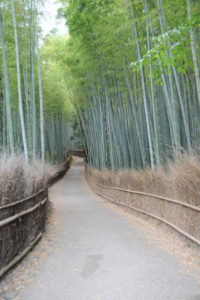 I would not necessarily recommend Nonomiya Shrine on its own since it is rather small and there are too many people to enjoy the experience (if there’s no pandemic going on…) However, if you’re strolling around the bamboo forest anyway, it’s a nice place to step in. The big event at Nonomiya Shrine is the Saigu Gyoretsu Procession in October, where the ancient procession of the princess to Ise is reenacted, even though she only goes as far as the river these days.
I would not necessarily recommend Nonomiya Shrine on its own since it is rather small and there are too many people to enjoy the experience (if there’s no pandemic going on…) However, if you’re strolling around the bamboo forest anyway, it’s a nice place to step in. The big event at Nonomiya Shrine is the Saigu Gyoretsu Procession in October, where the ancient procession of the princess to Ise is reenacted, even though she only goes as far as the river these days.
 Every two weeks now I have been visiting the Kyoto Tourist Information Office on Kawaramachi/Sanjo to scout out events for What’s up in Kyoto. They have lots of flyers for traditional events, garden illuminations and museum exhibitions, and also pretty much all the booklets, newsletters and papers written for tourists coming to Kyoto. And for the hapless foreigner, they also offer services like restaurant bookings etc. I don’t remember when I first found them, it must have been years ago. The staff are super friendly, all speak English, and over the years, we got to know each other. But after today, I will probably never see them again…
Every two weeks now I have been visiting the Kyoto Tourist Information Office on Kawaramachi/Sanjo to scout out events for What’s up in Kyoto. They have lots of flyers for traditional events, garden illuminations and museum exhibitions, and also pretty much all the booklets, newsletters and papers written for tourists coming to Kyoto. And for the hapless foreigner, they also offer services like restaurant bookings etc. I don’t remember when I first found them, it must have been years ago. The staff are super friendly, all speak English, and over the years, we got to know each other. But after today, I will probably never see them again…

